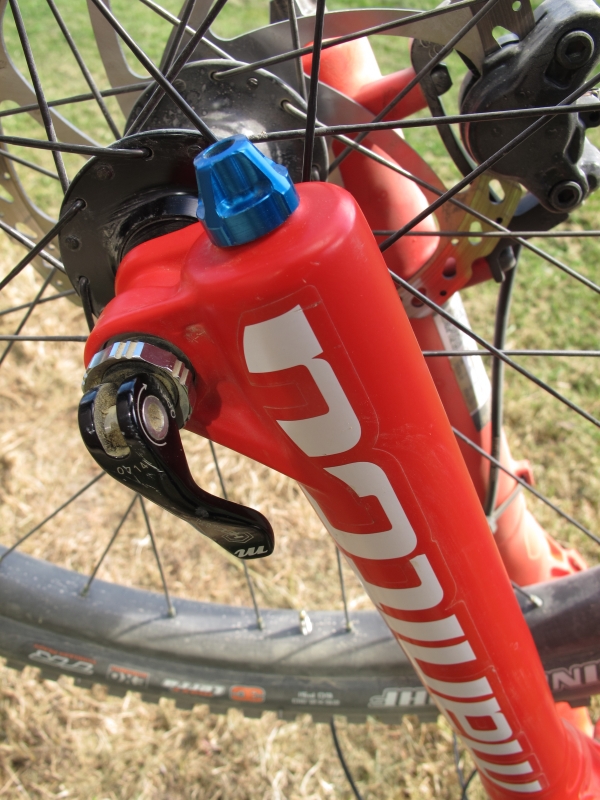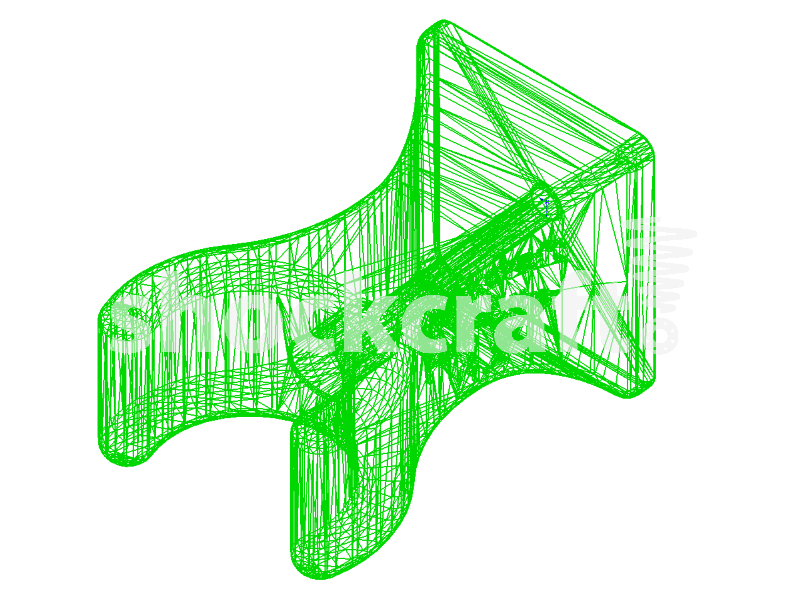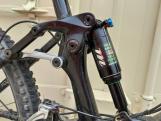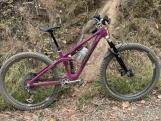You have no items in your shopping cart.
Tuning Rebound Damping
 You've already set up the correct spring rate. You've dialled in ride height too. So now we can discuss damping.
You've already set up the correct spring rate. You've dialled in ride height too. So now we can discuss damping.
To Damp is to Decrease AMPlitude, ensuring that each cycle of motion is less than the last. Not to be confused with "Dampen" which is to make wet.
Damping is a necessary thing to control motion and stop you getting bounced off the trail, but it's a fine line. Too little damping and your bike can feel unstable. Too much and it can feel dead and cost you traction.
There are lots of ways to damp motion in suspension and bikes have tried pretty much all of them: friction damping (horrible), elastomer damping (highly temperature sensitive), air damping (not very adjustable) and finally hydraulic damping.
Most bike forks now have some form of hydraulic damping. They trap oil and control it's exit path through controlled size holes, ports and valves, shearing and mixing oil to turn unwanted motion into heat.
On the bottom of most forks (top of open bath Fox) there's a knob which controls the rebound damping. A Manitou Mattoc rebound damper knob is shown at right. Wind it all the way in and it closes a port to slow the return speed of the fork. Open it all the way up and the fork returns faster. The range of adjustment you have depends on what's going on inside the fork and how sophisticated it's rebound damper is.
If your fork (or shock) goes to dead slow rebound with the rebound knob closed then you have a basic rebound damper which only has one escape path for the oil, through the fixed (but adjustable) size rebound port. This is called orifice damping and unfortunately it doesn't work well across the rebound range, offering too little resistance to slow speed fork movements and too much resistance to unloaded return. If you have orifice rebound damping then you'll have to compromise between stability and traction.
If your fork doesn't go to full slow with the rebound knob closed then you have additional high speed rebound ports and valving inside. This is a good thing which gives the fork a faster return speed from deep in the stroke (to follow bumps at speed) and better control over slow speed chassis movements (for stability).
Rebound damping that is too fast (i.e. not enough damping) will give great traction and keep the tyre planted, but will feel unstable and require a well connected rider to make the most of it. Rebound damping that is too slow (i.e. too much damping) will give poor traction as the wheel can't return fast enough and will be air-borne on the back side of bumps. The faster you go the worse this gets. A second problem is packing. Packing is when the suspension cannot return to normal ride height before the next bump. This feels terrible to the rider as the suspension gets lower and firmer through repeated hits.
So how do you set rebound damping? Well if you have orifice rebound then there is no good setting. You have to live with an unstable feeling or the suspension packing and running rough on fast hits. You may have to adjust your rebound damping for each track and riding speed to get an acceptable result.
If you have rebound damping with internal high speed ports then your adjuster becomes a low speed rebound (LSR) adjuster. It's job is to control the rebound side of chassis and body movements. Too slow and it'll feel dead, too fast and it'll feel unstable. Unlike orifice rebound you can have one setting that does it all. When you need faster fork return at speed the high speed ports inside will allow additional flow to make that happen.
So ride around on the flat and pump the fork with your weight over the front. If it porpoises (continues to cycle up & down) then more LSR damping is needed. If it doesn't help you lift up or feels dead then less LSR damping.
Slam your rear down on the seat and see how the rear shock responds. If it kicks you fast enough up that you feel yourself losing contact with the seat, then more LSR damping is needed. If it feels dead and offers no kick then less LSR damping is needed.
If you are lucky enough to have a high speed rebound (HSR) control as well as LSR damping (or you want to tinker with the shims inside the fork/shock) then you're looking for how the suspension returns from deep stroke unweighted. The more spring rate (or air pressure) you have the more HSR you will need. Return speed should be fast but controlled. If you have a big mismatch in LSR and HSR damping then you can get funky transitions between the two, resulting in shims knocking or making your rebound stroke behave like the dim witted orifice version.
Riding smoother terrain (i.e. groomed bike park trails) you can use more LSR damping. Riding choppier trails (i.e. rocks, roots and corrugations) you will need less LSR damping. Personal preference is a big thing too. Some people are happy to let suspension do it's thing as unhindered as possible. Others want it wound down tight.
Find Out More
For more information about setting up your suspension check out the following articles:
• Using Natural Frequency to Set Air Pressure & Spring Rate
• Tuning Low Speed Compression (LSC) Damping
• Tuning High Speed Compression (HSC) Damping
You may also be interested in our range of Technical Articles & Resources, written to help with bike maintenance & suspension setup.







